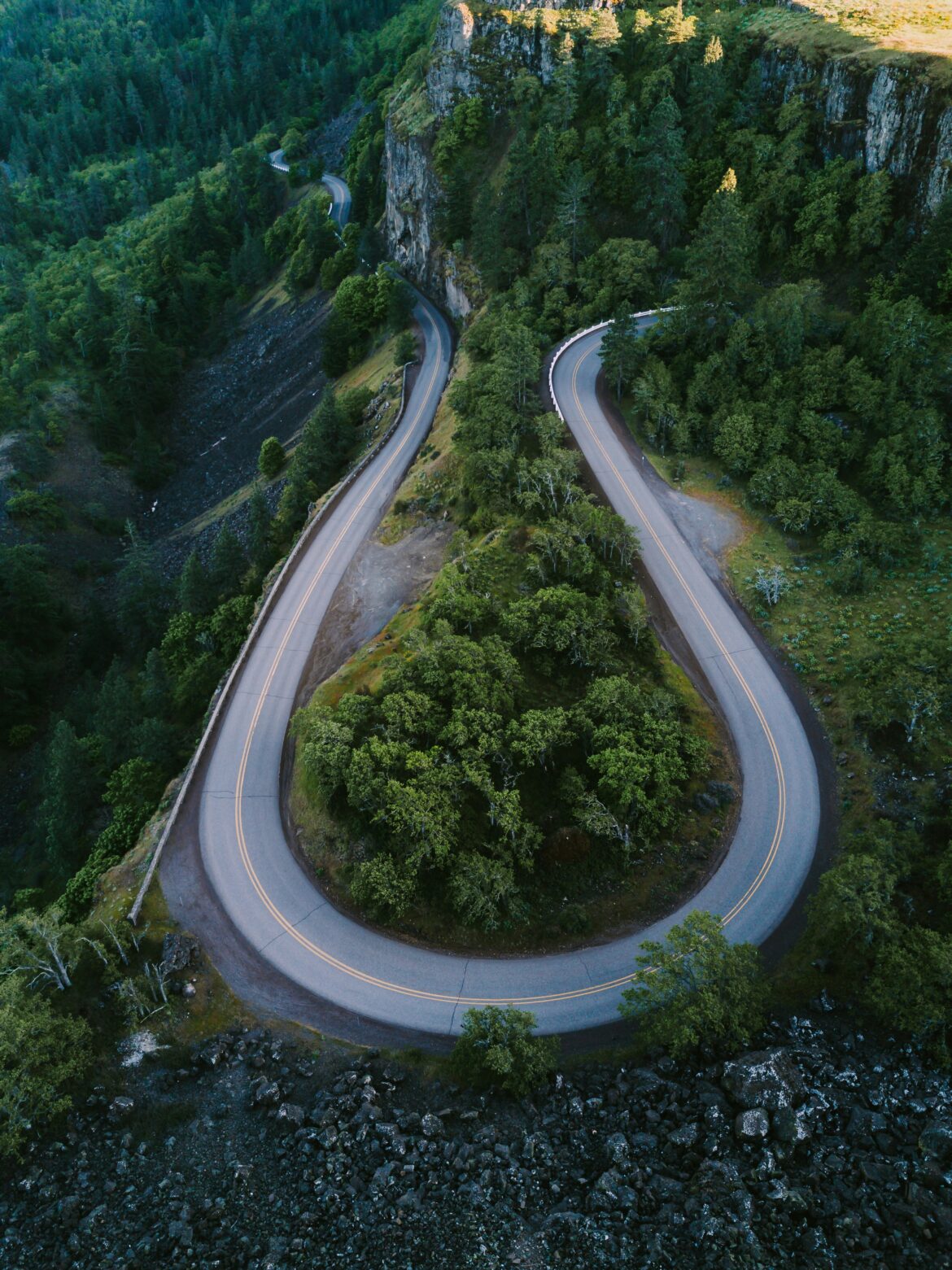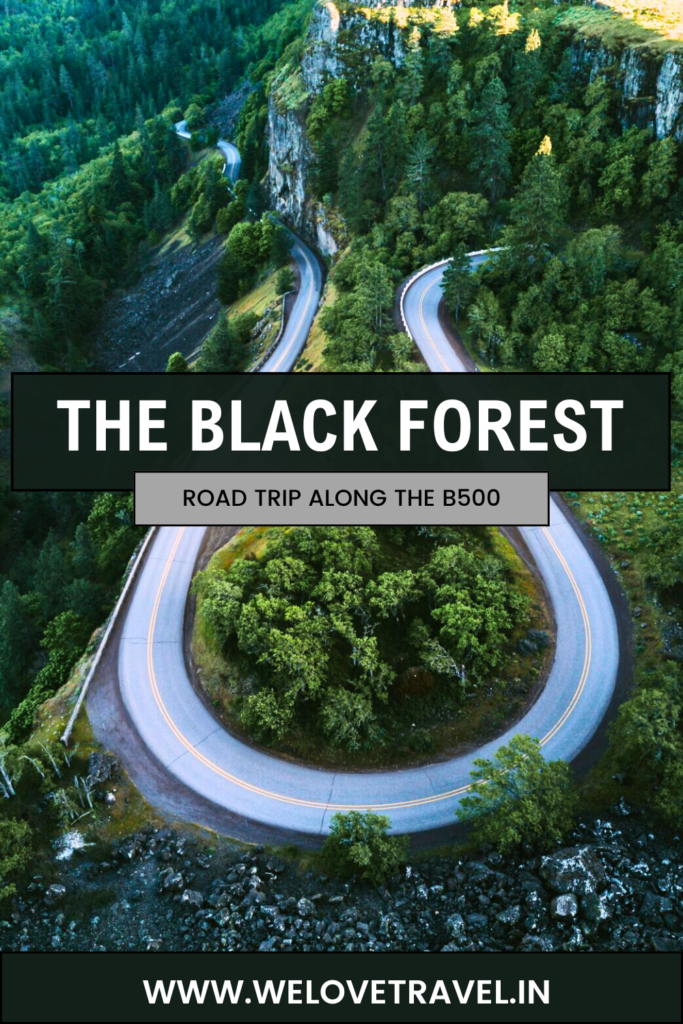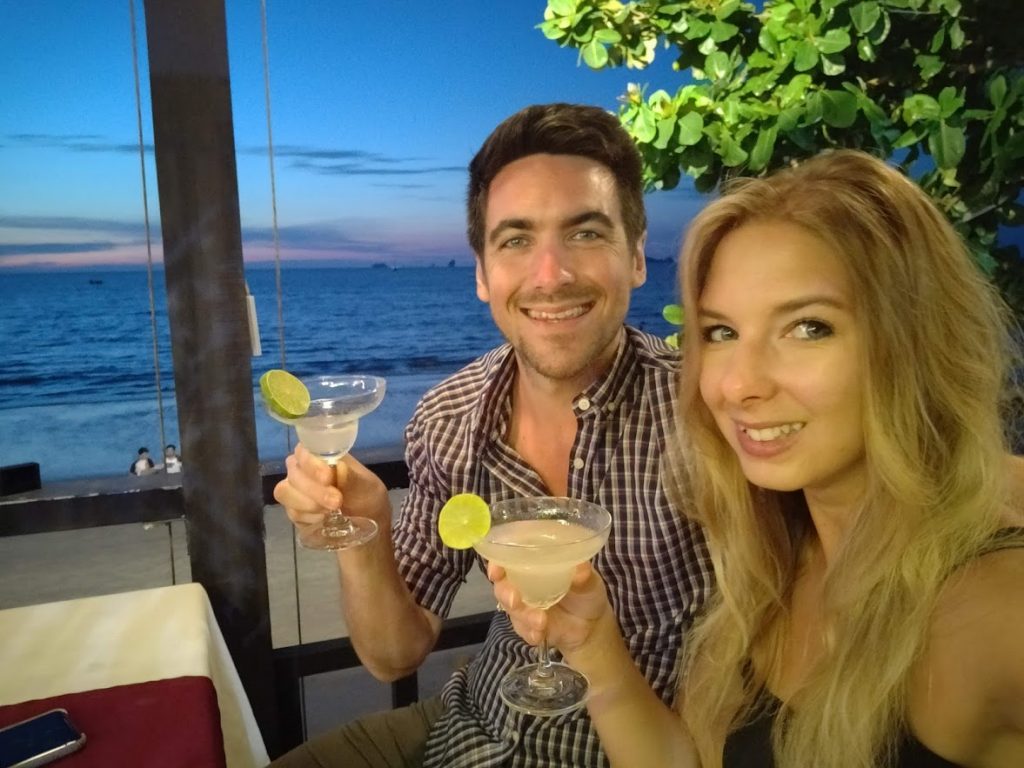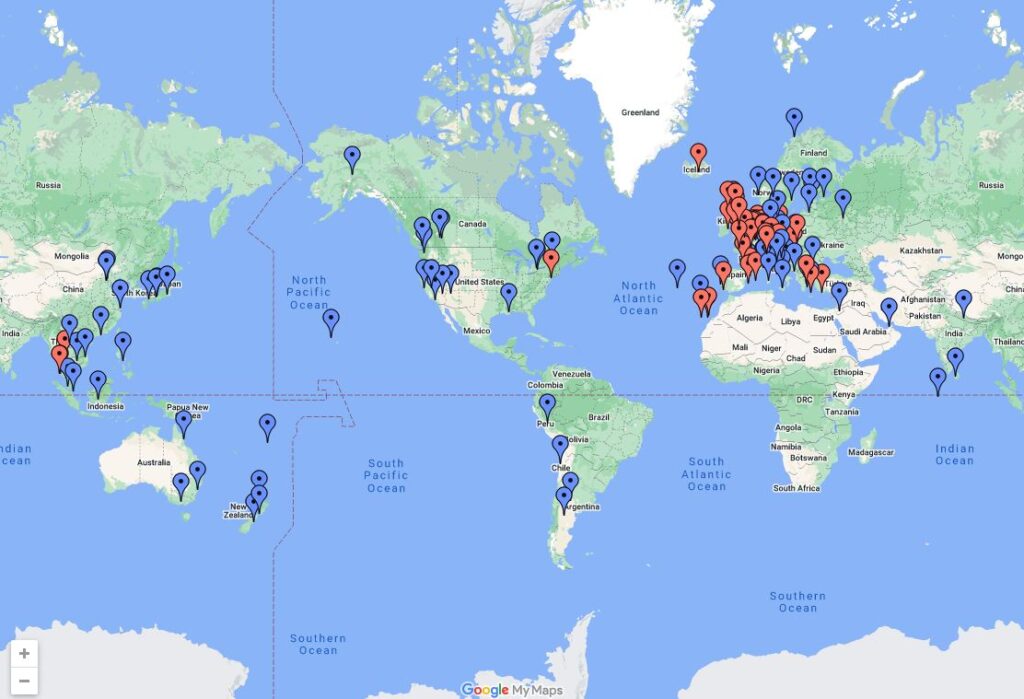An enchanting Black Forest road trip along the B500 (Schwarzwaldhochstrasse)
Have you ever dreamed of cruising along long winding roads, lined with lush forests and endless rolling hills? If the answer is yes, then a Black Forest road trip along the B500, also known as the Black Forest High Road (or Schwarzwaldhochstrasse) in German will be right up your street! This iconic route, renowned for its stunning vistas and charming towns, offers a driving experience like no other. We recently completed the B500 route on our own Black Forest road trip and fell in love with the scenery and everything about the Black Forest! Here’s our guide to driving the Black Forest High Road and everything you need to know.
What is the Black Forest High Road?
The B500 goes by many names. You may see B500, Black Forest High Road or Schwarzwaldhochstrasse. It’s all the same route! However, it’s not just any route. This is often hailed as one of the most scenic drives in Germany. Stretching approximately 60 kilometres (37 miles) from the spa town of Baden-Baden in the north to Freudenstadt in the south. Your key waypoints include Baden-Baden, Kniebis, Triberg, Schluchsee, and finally Koblenz near the southern end. To help you plan your route, we have included a map further down this post.
Completed in 1952, the B500 offers long sweeping corners, smooth switchbacks and hairpin bends, with elevated views that let you savour the incredible panoramas of the surrounding area. Along the way, you’ll also find plenty of lay-bys where you can park up, stretch your legs, and soak up the stunning scenery.
Why the B500 is a must-drive route
The Schwarzwaldhochstrasse is a bucketlist experience if you’re planning a Black Forest road trip. This route offers a blend of thrilling driving and natural beauty. Along the way you’ll also pass by many of the Black Forest’s fairy tale towns and villages. There are photo opportunities aplenty along this route! The Black Forest High Road showcases the very best of the Black Forest.
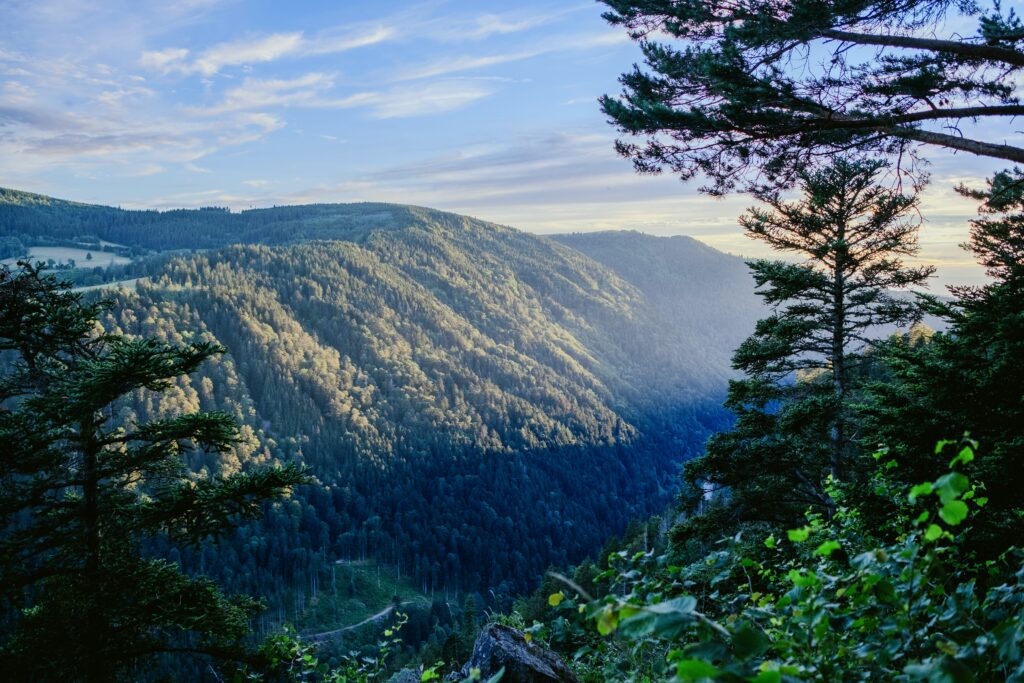
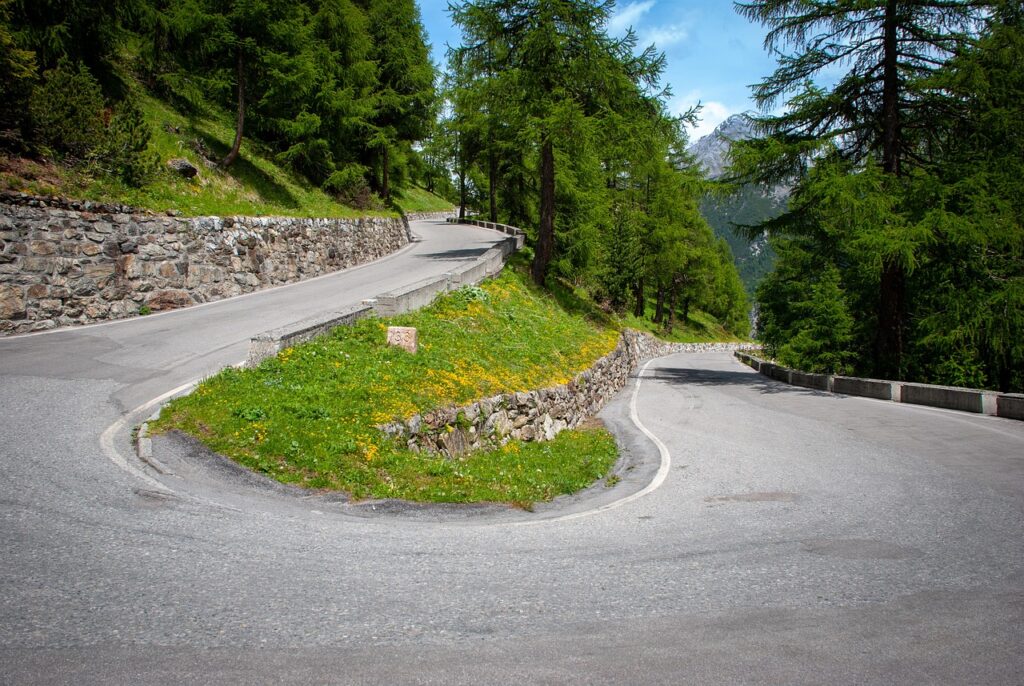
Highlights of the Black Forest High Road
From quaint, picturesque towns and villages, to stunning view points and natural wonders. Here are a few of our favourite highlights from driving the B500.
Baden-Baden
You begin your Black Forest road trip in Baden-Baden. This is a town renowned for its elegant spa culture and tranquil surroundings. Known for its restorative hot springs, Baden-Baden is a haven of relaxation. Before setting off, wander through the historic streets, visit the famous Lichtentaler Allee park, or unwind in one of the many luxurious thermal baths.
Northern Black Forest Ridge
Leaving Baden-Baden, the B500 climbs toward the main ridge of the northern Black Forest. This stretch offers impressive views over the Rhine plain, with the French Vosges mountains visible in the distance. The road’s smooth, sweeping sections are a dream to drive, and the occasional straight sections provide perfect opportunities to enjoy the panoramic vistas. Depending on weather, this section can often be shrouded in cloud. If you’re able to be flexible with your days, it’s worth checking the forecast before you set off.
Mummelsee
About halfway through your journey, you’ll encounter Mummelsee, a serene glacial lake surrounded by thick pine forests. The area around Mummelsee is also known for its hiking trails that offer breathtaking views of the surrounding countryside. In particular, a stunning view of the lake below you. Be sure to sample the local Black Forest cake at the lakeside café, a treat that’s hard to resist!
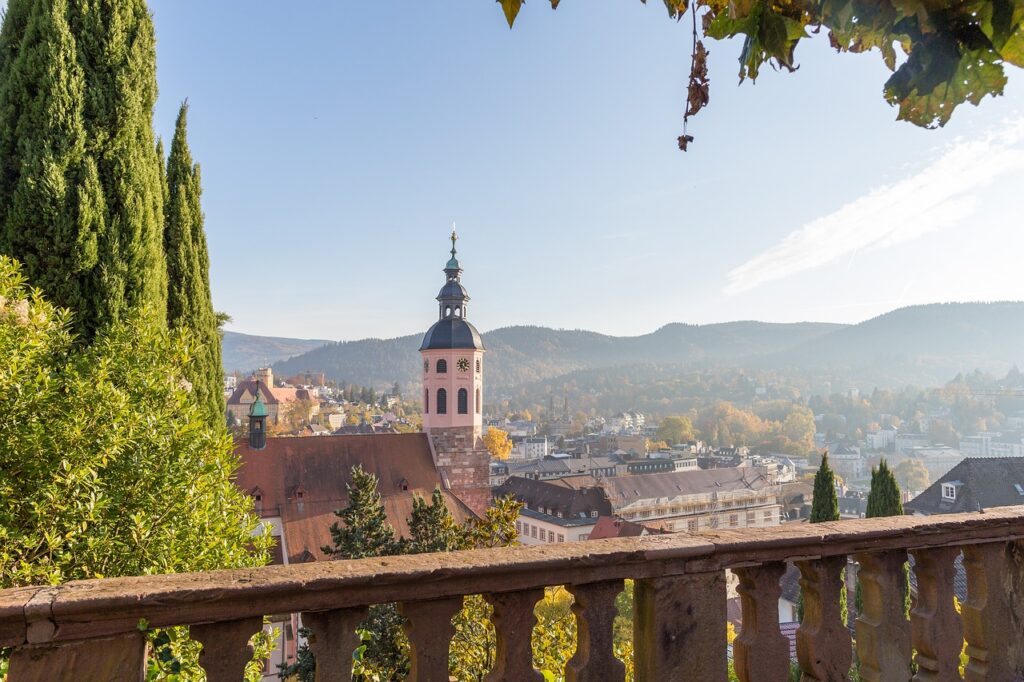
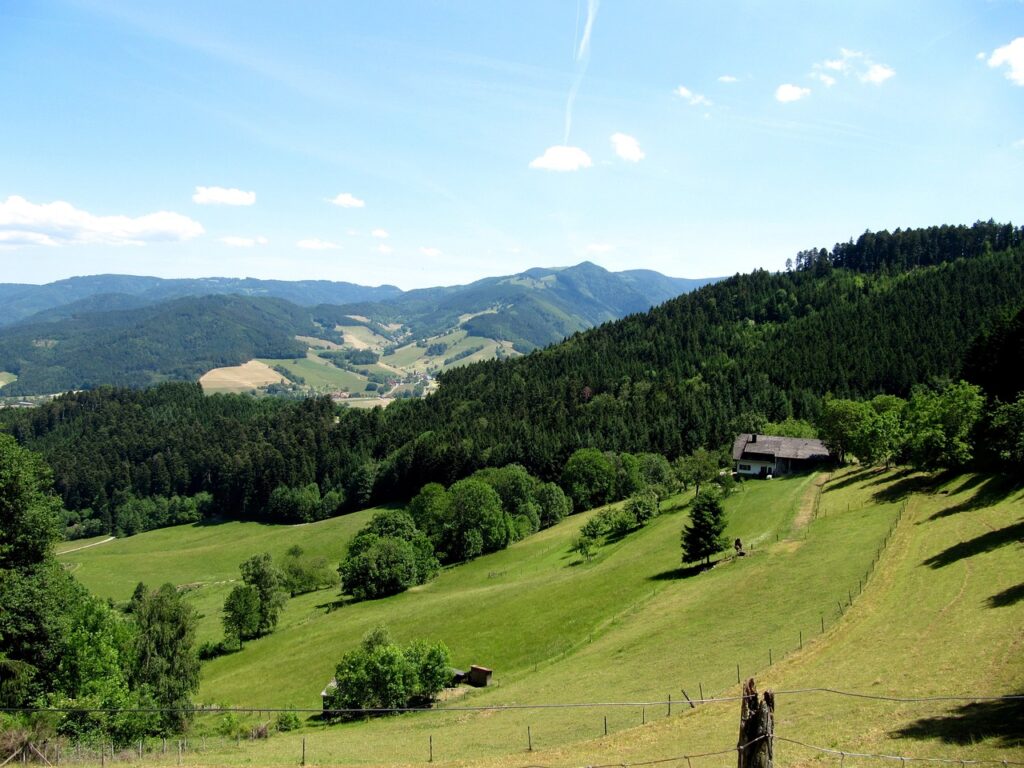
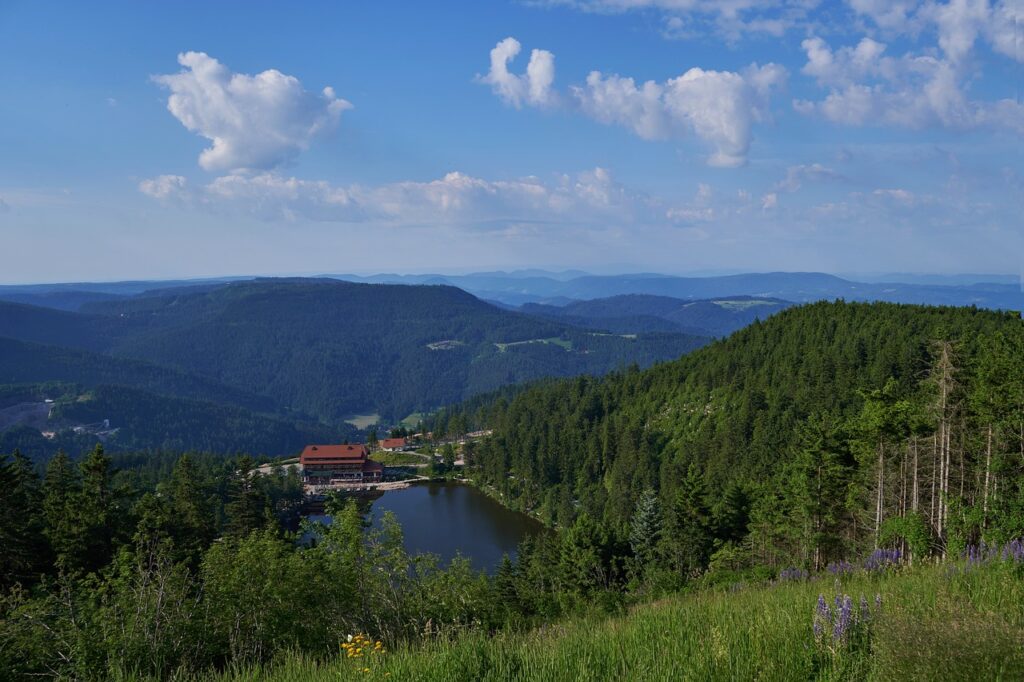
Triberg and Schonach
A slight detour from the Schwarzwaldhochstrasse will take you to Triberg, home to Germany’s highest waterfalls! Located in a pretty forest setting, the waterfalls are definitely not to be missed. The town of Triberg itself is also lovely to visit. With half-timbered houses and cosy eateries it’s a great spot to grab some lunch.
Nearby in the village of Schonach, you’ll find the Black Forest’s largest cuckoo clock! The clock is a building-sized structure, showcasing the region’s famed clockmaking tradition. This charming area is perfect for a quintessential Black Forest experience.
Schluchsee
Further south, near the end of the B500, you’ll find Schluchsee, the largest lake in the Black Forest. You can take a boat ride, swim in the lake, or relax by the shore. Schluchsee is a great spot to visit for a peaceful retreat and stretch your legs during your Black Forest road trip.
Freiburg
Though not directly on the B500, ending your journey in Freiburg is a great option. This lively university town is known for its medieval old town, stunning Freiburg Minster, and sunny climate. The old town is a treasure trove of narrow streets, bustling markets, and stunning architecture. You can visit the Freiburg Minster, a Gothic cathedral with an impressive tower that offers panoramic views of the city. Freiburg is also a hub for excellent dining and shopping, making it the perfect end to your road trip. If you visit in the winter time, it is also home to one of the Black Forest’s best Christmas Markets!
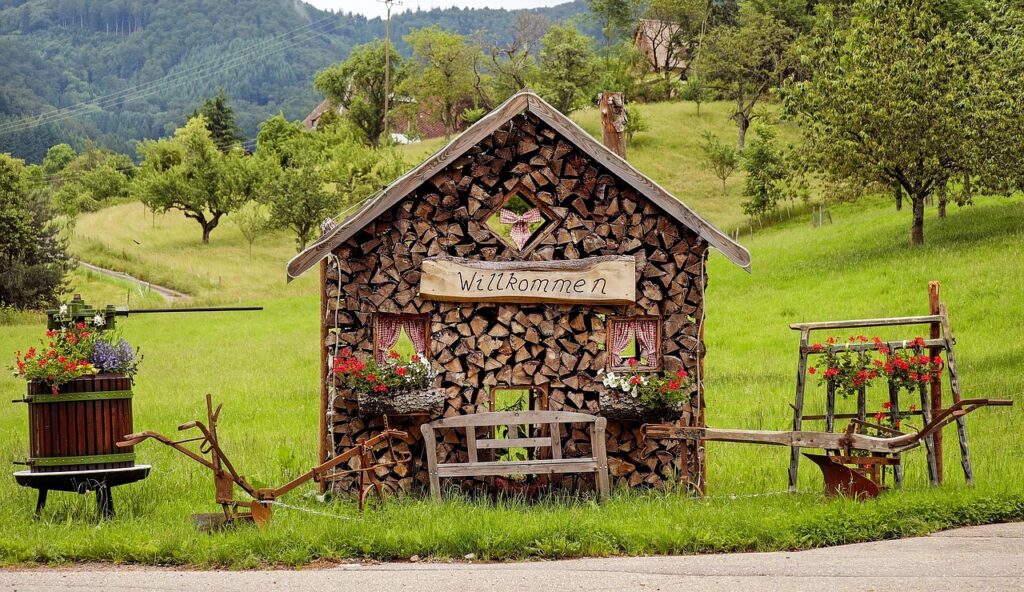
B500 Schwarzwaldhochstrasse Map
Although the B500 officially stops at Kniebis and Freudenstadt (marked in green on the below map), we actually preferred a detour towards Triberg. We have plotted both routes on the map below depending what works best for your Black Forest road trip!
The route…
Starting in Baden-Baden (point A) pick up the B500 and head south. Along the way you’ll pass Geroldsauer Wasserfall. It’s not as big or impressive as Triberg, but worth a quick stop.
The road continues to Mummelsee (point B). It’s a nice easy stretch, but if at any point you’re unsure, you should start to see brown “Schwarzwaldhochstrasse” signs along this part to guide you. At Mummelsee there are some parking lay-bys. Take the opportunity to pull over, enjoy the stunning views and explore the hiking trails here.
We’ve marked a 3rd waypoint at Ruhestein. Ordinarily, you’d continue the B500 where it forks to route 28. For some reason Google Maps won’t plot this. We’re unsure if there’s a road closure at the time of writing (August 2024).
At the fork, head east to Kniebis and Freudenstadt, or west along the B28 to Bad Peterstal-Griesbach. The latter is a tight mountain road all the way down to Triberg. We have marked 2 waypoints to help guide you.
At Schonach (point F) you can visit the giant cuckoo clock. You are then a short drive from Triberg (point G). Stop for lunch here and visit the famous Triberg Waterfalls.
From here you can pick up the B500 again. (Once again Google Maps won’t plot this route). Follow the road all the way down to Furtwangen. The road weaves all the way towards Hinterzarten, where you can pick up route 31 straight to Freiburg.
Freiburg is the gateway the rest of the Black Forest! From here you can explore so much more of the region. Our particular favourite is a small town called Todtnau. You can visit Titisee, Feldberg, Belchen, Hinterzarten and more! We have written a list of 10 things to do in Todtnau if you’re new to the area.
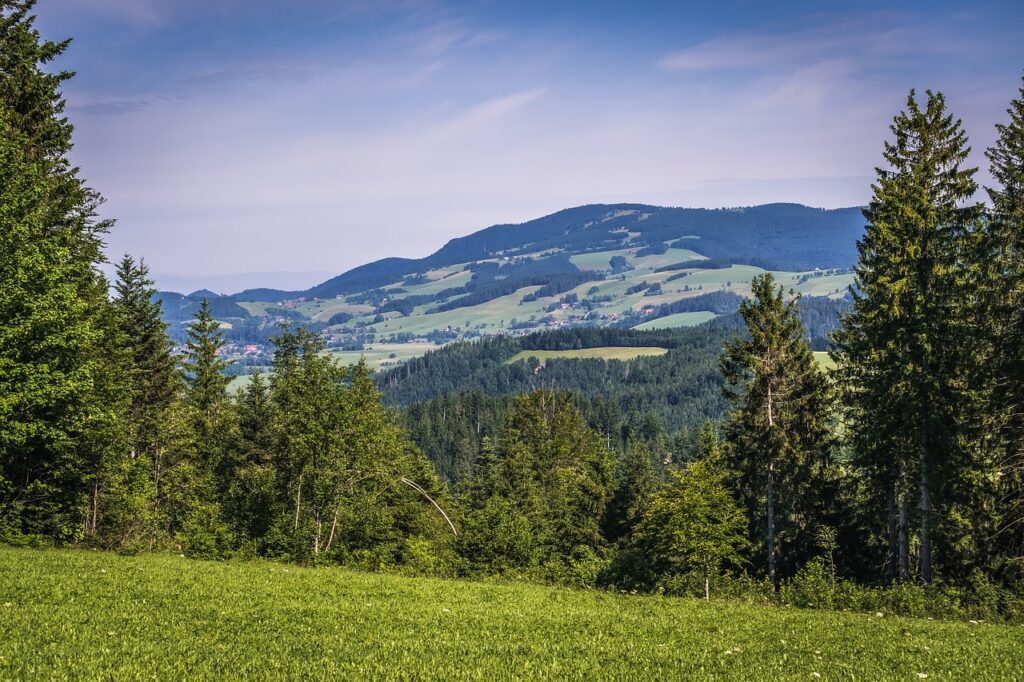
When to drive the Black Forest High Road?
Officially there’s no bad time to visit this area. Both summer and winter offer very different experiences. We have done our own Black Forest road trip in both summer and winter. In fact, our preference is actually winter, having spent Christmas in the Black Forest. It all comes down to the experience you want.
Spring / Summer:
Throughout May to August, the Black Forest landscape is lush and vibrant. Flowers are in bloom and those rolling alpine meadows looked freshly plucked from The Sound of Music. This is perfect time of year for outdoor activities like hiking and cycling. The roads in Germany are very well maintained throughout the year, so you’ll have no problems driving the Schwarzwaldhochstrasse. Just be mindful that rain can be frequent in the hills at this time of year, so the roads may be slippery. During the height of the summer months, the roads can be busy also. So if you want clear open-road driving, you’ll want to make tracks nice and early.
Autumn:
During September and October bring cooler conditions, but the Black Forest High Road is less crowded than summertime. The weather is relatively stable at this time of year but the scenery is even more fantastic! The trees turn beautiful shades of gold, orange, and red, which really heightens the beauty of the Black Forest. As with driving in the summer, always be aware of the driving conditions. If there are a lot of leaves on the road, or if there’s been heavy rainfall, be mindful the roads may be slippery.
Winter:
Winter in the Black Forest is the most magical time of year! Snowfall can happen as early as November and as late as February or March. A blanket of snow transforms the Black Forest into a snowy paradise! This is the perfect place for skiing, snowboarding, and cosying up with a mug of glühwein. We visited in December over the Christmas period and were very lucky to experience our own winter wonderland.
Germany is much more prepared for snow than we are in the UK. The roads are gritted and very well maintained, so you should have no issues driving the B500. However, always exercise caution as black ice and frost do still settle and those tight bends can still be slippery. Please be aware that if you’re driving in the winter, winter tyres are compulsory on your car. We detail more about this below.
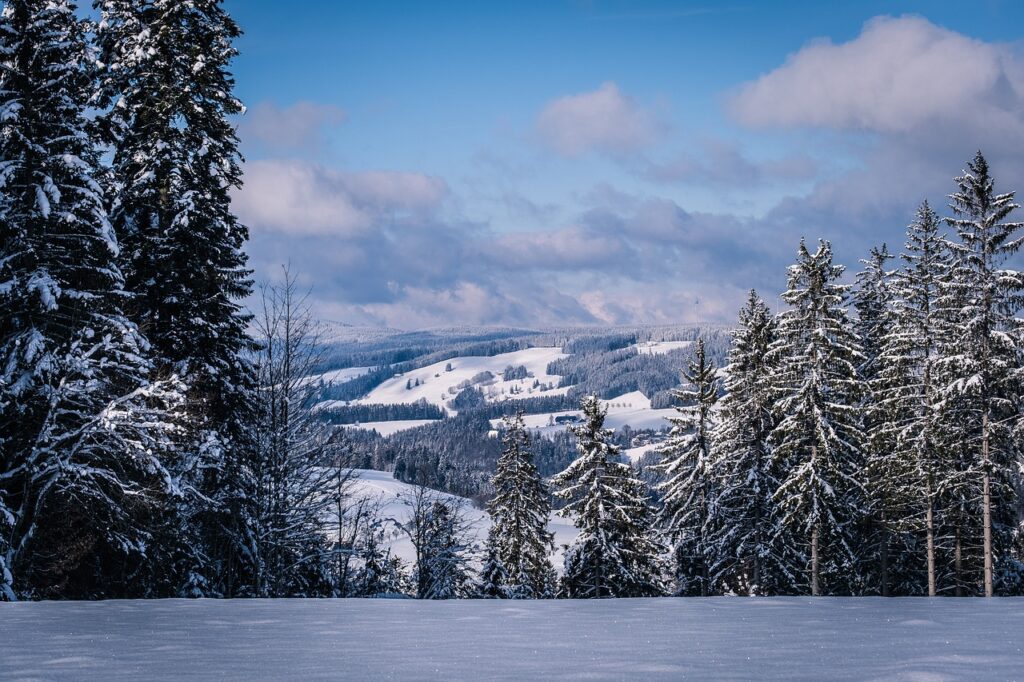
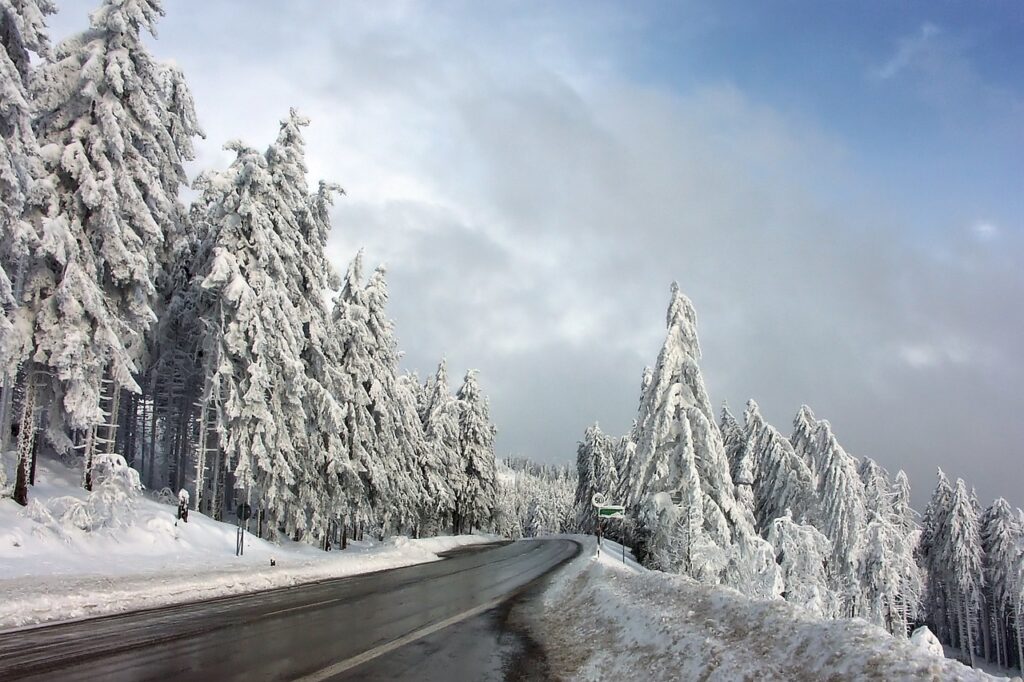
Do you need an Umweltplakette?
An Umweltplakette (environmental badge), is a mandatory sticker required for vehicles to enter certain low-emission zones (Umweltzones) in Germany. These zones are established to reduce air pollution, particularly in urban areas. The badge indicates your vehicle’s emission category based on its environmental impact, with green being the cleanest. Most older or more polluting vehicles are restricted from entering these zones.
Along the Schwarzwaldhochstrasse, the Umweltplakette is not required for the road itself. However, if you plan to visit or drive through towns or cities that have designated low-emission zones (Umweltzonen), you will need the Umweltplakette.
Here are some areas along or near the B500 where an Umweltplakette is required:
Baden-Baden: This town has a low-emission zone, so if you plan to explore the town or stay overnight, you will need an Umweltplakette.
Freiburg im Breisgau: Freiburg is a common detour for those exploring the southern Black Forest. Freiburg has a low-emission zone, so an Umweltplakette is necessary if you drive into the city.
How to get an Umweltplakette?
The emissions sticker is only applicable if you’re taking own car from the UK. If you’re hiring a car in Germany they will already have the sticker in place.
We typically buy ours online from TÜV directly. We order ours about 1 month before the trip and it’s usually delivered to us in the UK within 2 weeks, sometimes 1 week! The cost is a little under €20 to buy the sticker. The TÜV website also list the different categorisations of vehicles so you can see what your car requires. It’s worth noting the sticker is mandatory, even if you drive an EV!
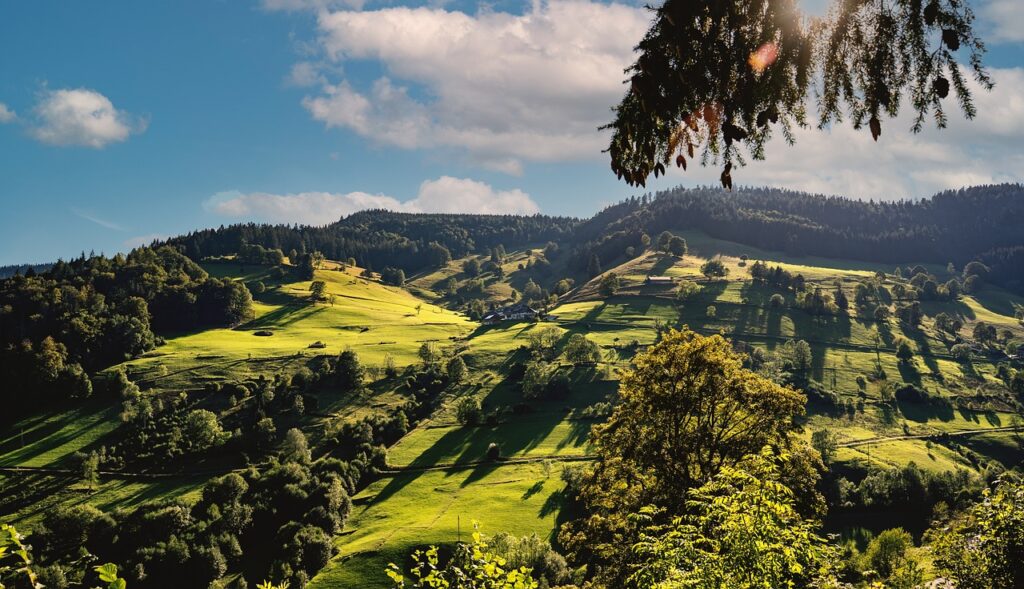
Tips & other things to know:
Driving: The Schwarzwaldhochstrasse offers some of the most beautiful elevated driving in the region. The road is well-maintained, but it’s important to drive carefully, especially on the winding switchback sections.
If this is your first time driving in Europe, make sure you have your European Driving Kit in the car. This includes a lot of mandatory / legal requirements which we don’t need in the UK, but are required in Europe. You can get these on Amazon or the AA directly.
Winter Driving: If you’re planning to drive the Schwarzwaldhochstrasse in winter, ensure your vehicle has winter tires. Snow and ice can make the road slippery, especially at higher elevations. This is also a legal requirement during the winter in Germany. Check the forecast before you set out, as certain sections of the road may be closed during heavy snowfall.
Fuel: The Schwarzwaldhochstrasse passes through remote areas with few petrol stations, so make sure you’re topped up before starting your journey. Baden-Baden and Freiburg are good places to refuel.
Parking: Many scenic spots along the Black Forest High Road have parking areas or lay-bys. These are ideal for short breaks or to take in the views. Some of these spots can fill up quickly during the peak of summer, so plan your stops accordingly.
Accommodation: There are many cute guesthouses, and hotels along the Black Forest High Road. It’s worth booking accommodation in advance, especially during peak season. Staying overnight along the route means you can explore the area better and enjoy the activities the Black Forest is so famous for.
Local Cuisine: Don’t miss the chance to try local specialties such as Black Forest ham, regional wines, and, of course, the famous Black Forest cake (Schwarzwälder Kirschtorte). Many inns and restaurants along the route serve these delicacies – enjoy!
Get in touch
We hope this B500 Black Forest road trip guide was helpful! It’s such a special place, you’re bound to fall in love with it as much as we did! If you have any questions please leave a comment below, we’d love to hear from you! If you found our blog helpful, check out our Insta @welovetravel.in – if you give us a follow feel free to drop us a message and say hello 👋
Interested to see where else we’ve adventured to? Check out our Travel Bucket List below 👇

